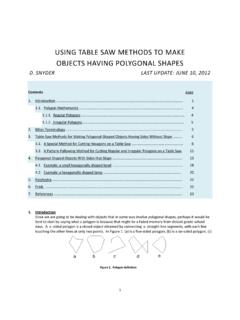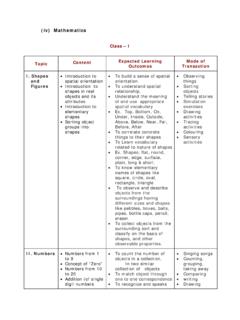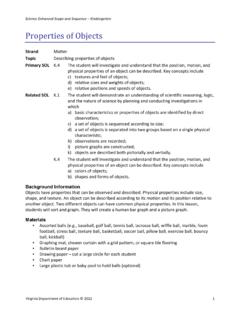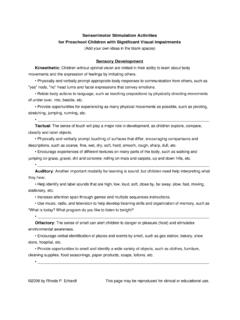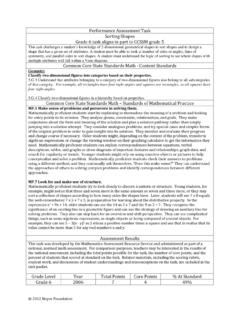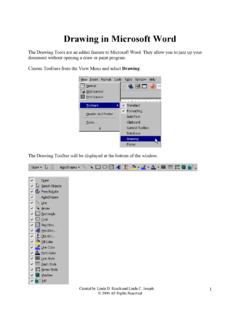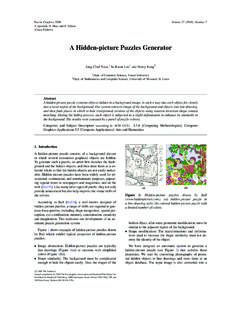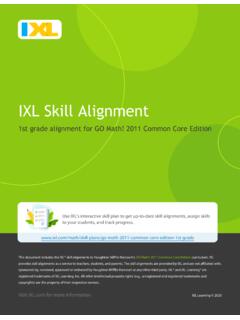Transcription of Math 3 3-D Objects and 2-D Shapes Notes
1 Math 3 3-D Objects and 2-D Shapes : Parent/Teacher Guide Outcome(s): Strand: Shape and Space (3-D Objects and 2-D Shapes ). 6. Describe 3-D Objects according to the shape of the faces and the number of edges and vertices. 7. Sort regular and irregular polygons, including: triangles quadrilaterals pentagons hexagons octagons according to the number of sides. What students should be able to do: Students should be able to identify and count the faces, edges and vertices of given 3-D Objects ; they should also be able to sort a set of 3-D. Objects according to the number of faces, edges or vertices. Students should be able to classify regular and irregular polygons according to the number of sides, including those having different dimensions and/or orientations.
2 Typical errors made by students and areas of difficulty: Students may have difficulty differentiating between prisms and pyramids. Students may have difficulty identifying and counting the faces, edges and vertices on an object unless they have a concrete model with which to work. Students may have difficulty understanding that, for example, a six-sided polygon is a hexagon, regardless of whether it is regular or irregular. It is important to show a variety of Shapes to students, rather than only prototypical Shapes . Ideas for more practice/extension: Students can find examples of different 3-D Objects and 2-D Shapes in the environment. Page 1 of 1. Math 3 Under The Sea 2009 Alberta Education ( ).











